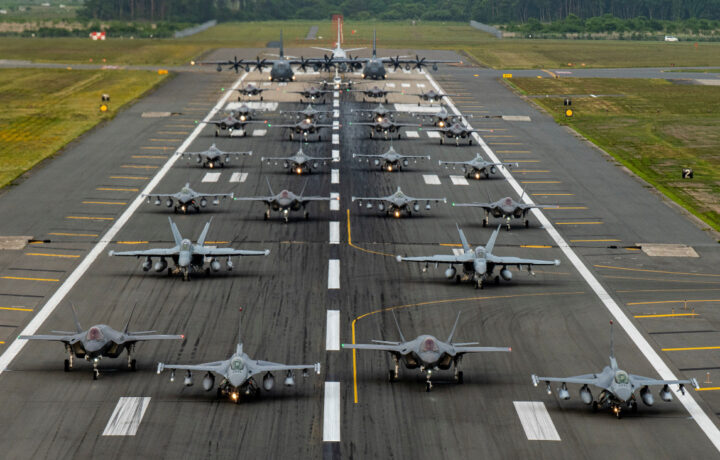Due to its strategic location, Kadena Air Base on the Japanese island of Okinawa is often known as the “Keystone of the Pacific.” The U.S. military has increased its presence at the facility but will also beef up its airpower at Misawa Air Base.
Located in the northern part of the island of Honshū, Japan, it is about 425 miles north of Tokyo. It is fittingly known as “Tip of the Spear,” as it is at the forefront of operations, located just 810 miles from the North Korean capital of Pyongyang and approximately 1,300 miles from Beijing, China. The reasonably close proximity to North Korea and China is why the United States Air Force has announced it will continue to rotate jet fighters to the base, as its fleet of F-16 Fighting Falcons is retired. The 35th Fighter Wing at Misawa will begin to draw down those aging aircraft this summer.
While plans have been announced for the U.S. to deploy a squadron of Lockheed Martin F-35 Lightning II fifth-generation stealth fighters to the Japanese base, the aircraft won’t arrive until next spring. After that, Misawa will have to trade up, retiring its 36 aging F-16s for 48 more advanced F-35s.
Misawa Air Base will also be only the second United States Air Force overseas base to host the Lightning II, following Royal Air Force (RAF) Lakenheath in the UK.
“The Aircraft will transition on a rotational basis,” a Pacific Air Force spokesperson told Air & Space Forces Magazine earlier this week. “These rotations ensure the continuation of our long-standing mission to defend Japan and maintain an open and free Indo-Pacific.”
Are the F-16s Boneyard Bound?
It is unclear where the F-16s from Misawa could end up. Air & Space Forces Magazine speculated that the Fighting Falcons could receive a service life extension program upgrade, including more advanced avionics, an improved electronic warfare (EW) suite, and radar systems. That could keep the Fighting Falcons in the skies through the 2040s.
If upgraded, the fighters could remain in service with the Air Force or be sent to an Air National Guard unit. An ANG unit could also get them as is, while they could also be sent to the 309th Aerospace Maintenance and Regeneration Group (309th AMARG) and maintained at the famed Davis-Monthan Air Force Base (AFB), Arizona, “Boneyard.”
It could be argued that the Air Force could see the Boneyard restocked with F-16s. Earlier this month, it was reported that around 85 no longer airworthy Fighting Falcons were sent to Ukraine to help keep its fleet of donated aircraft from the Netherlands and other NATO countries flying.
Misawa Hosting the B-1B Lancer
The transition of U.S. Air Force fighters at Misawa Air Base will only begin this summer, but this month, the facility has been hosting at least two Rockwell B-1B Lancer long-range strategic bombers as part of a Bomber Task Force (BTF) mission.
Two U.S. Air Force B-1B Lancers from the 9th Expeditionary Bomb Squadron at Dyess Air Force Base (AFB), Texas, arrived late last month at the facility as part of BTF 25-2. It marked the first time Misawa has served as a host facility for such a rotational deployment. BTF 25-2 is expected to last around six weeks, during which time the Cold War-era bombers will conduct training exercises with allies and regional partners.
Though both the Japanese Self Defense Force and the U.S. Air Force have highlighted the successful bilateral exercise, the deployment of the B-1B Lancers to Misawa Air Base hasn’t been without some controversy.
Just a week after arriving in Japan, one of the B-1 Lancers was forced to make an emergency landing at the base, which forced the closure of a shared runway with the Misawa Airport and required that a commercial flight return to Tokyo’s Haneda Airport with 200 passengers onboard, while other commercial flights were canceled.
That resulted in a “sharp rebuke from local officials.”
Hopefully, the F-35s can avoid any similar controversy.




